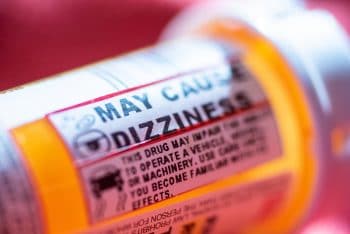Opioid Medicines in the UK Will Now Carry Addiction Warning on Label
Categories: Addiction , Awareness , Epidemic , Overdose , Prevention

The Health Secretary’s Attempt to Reduce Opioid Addiction
Opioid painkillers issued in the United Kingdom will soon have to carry a prominent warning on their label about the risk of addiction in an effort to tackle growing concerns around prescriptions and over-the-counter medications. Secretary of State for Health of the United Kingdom, Matt Hancock, proposed the labelling changes after figures in England and Wales revealed a more than 60% increase in prescriptions for Opioid painkillers in the last decade.
Painkillers were a major breakthrough in modern medicine and are hugely important to help people manage pain alongside their busy lives – but they must be treated with caution.
UK Secretary for Health, 2019
Common Opioids prescribed for pain management in the UK include Codeine, Tramadol, Morphine, Oxycodone, Buprenorphine, and Diamorphine. The medications, which are derived from Opium, have a sedative effect and can cause feelings of pleasure similar to that of the euphoria produced by illegal drugs. The dopamine-inducing chemical effects that Opioids have on the brain puts the user at risk of building a tolerance, becoming dependent on them, and developing an addiction. The majority of patients that have become addicted to Opioids in the UK have said that they were “unaware” of the addictive potential of the drugs.
This can largely be attributed to the faulty packaging of Opioid medications in the United Kingdom. Although the Medicines and Healthcare Products Regulatory Agency (MHRA) stipulates that addiction warnings are to be marked on the packaging of over-the-counter Opioid-based products, there is currently no law stipulating that these warnings must appear on medications that require a prescription.
The Secretary of Health’s new packaging will clearly outline the addictive properties of all Opiate-based products and will be enforced by the MHRA.
Secretary Hancock acknowledges that the current Opioid situation is not as bad in the UK as it is in the US, and that active prevention is key: “We must act now to protect people from the darker side of painkillers.”
The State of the Opioid Crisis in the UK
Hancock’s announcement was made this past Sunday after the Department of Health (DOH) revealed the findings of an investigation regarding rates of Opioid addiction and abuse in the United Kingdom. The study showed that the number of prescriptions for Opioids issued in England and Wales had risen dramatically from more than 14 million in 2008 to 23 million in 2018. Additionally, it was found that more than 2 million working-age people in England are estimated to have taken a prescription painkiller that was not prescribed to them over the course of the past year.
The DOH also demonstrated to officials that Opioid-related overdoses in the UK have almost doubled in the same time span and deaths have skyrocketed up to 5 a day.
Despite the shockingly high rates of Opioid abuse that the UK is experiencing, it pales in comparison to that of the United States. The prescription Opioid Crisis in the US is so severe that President Trump was forced to declare a national emergency in 2017 in an effort to combat the drug epidemic. It is estimated that during the year of 2017, 11.4 million Americans were misusing prescription painkillers. It is this widespread rate of addiction and devastation that the Secretary of Health is trying to prevent in the UK with the new label regulations.
A specific deadline for the introduction of Health Secretary Hancock’s warning has not yet been set but the regulator thinks a review could be concluded within the year. A spokesman for the MHRA said: “We are working as quickly as possible to introduce regulatory changes once all the evidence has been assessed.”
The Health Secretary’s labelling changes are just the first of many regulatory changes that are being developed in the UK to help fight against Opioid addiction.